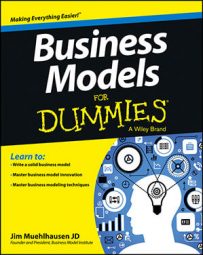Gas stations don’t make money from the sale of gasoline. They make their profit from the sale of higher-margin items like cigarettes and soda. While creating your winning business model, think about which products or services get the customer in the door and which ones keep your business profitable.
The secret to the gasoline, cigarettes, and soda formula lies within buyer psychology. Consumers can’t help but pay more attention to and be more price sensitive toward some items over others. Plenty of people will drive across the street to save two cents on a gallon of gas but have no idea the cost difference of the Snickers bars inside the station.
To capitalize on this dynamic, give consumers the psychological “victory” of winning the pricing game only on the items they pay close attention to. The human mind can only manage so much information, and customers can’t know the best deals on all your offerings. These “cigarette and soda” items offer the best opportunities for high margins.
Other companies using this concept provide a good source of ideas for your business. The following table shows you examples of a few of them.
| Type of Business | Main product | Higher margin products or services |
|---|---|---|
| Ad agency | Cool idea #1 | 15% printing markup |
| Ad specialty company | Price of T-shirts | Everything but T-shirts |
| Alarms | Bid work | Annual inspections, repairs, monitoring |
| Association property manager | $/house/month | Mowing, maintenance, legal fees, collection fees |
| Auto parts | Availability, delivery speed | Add-on parts, sundries |
| Brake calipers | Cost for top-moving 50 SKU’s | Expensive imports, rear calipers |
| Bridal shop | Dress | Alterations, hats, tuxedos |
| Coffee service | Delivery frequency and cost/lb | Sugar packets, water coolers, fees |
| Private investigator | Background checks | Add-on work, equipment intensive work |
| Software/staffing | Low-margin grunt work | Shelved code, offshoring |

